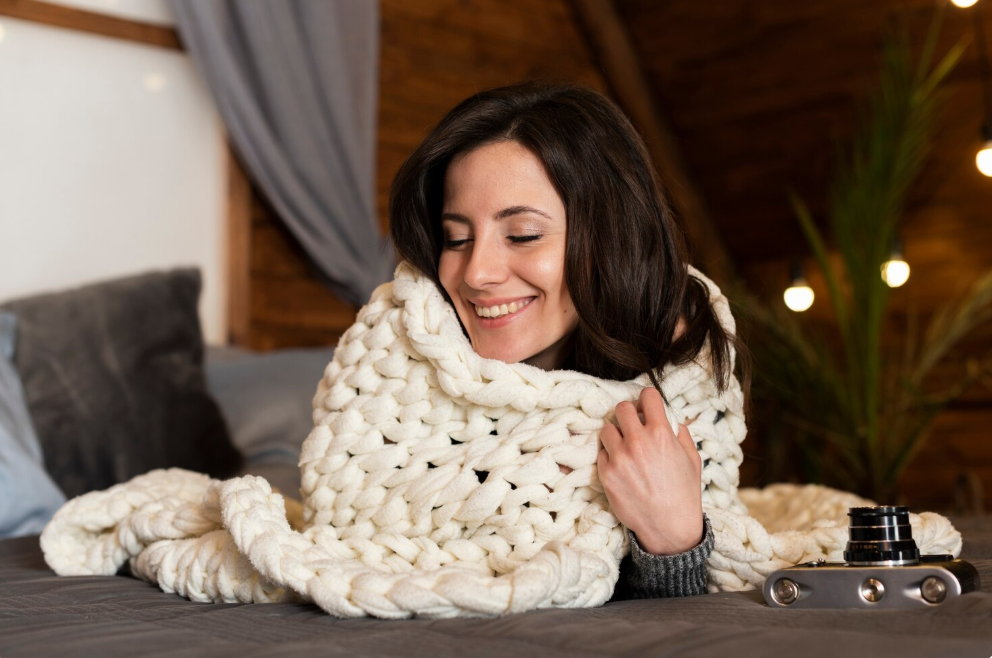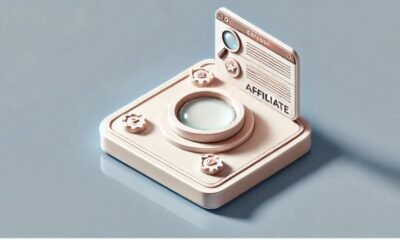Blog
Cardigan: More Than Just a Comfortable Knit

In the world of fashion, few garments strike the balance between comfort and elegance as effortlessly as the cardigan. This versatile piece of knitwear, characterized by its open front and often buttoned closure, is a staple in wardrobes across the globe. It can be draped over shoulders for a preppy look, worn snugly buttoned for warmth, or tossed over a dress to combat a chilly breeze. The cardigan’s history is as rich as its texture, evolving from a practical military garment to a symbol of intellectual cool and timeless style. Its ability to seamlessly transition from a casual weekend layer to a polished office essential is a testament to its enduring appeal. This is the story of how a simple knit became an indispensable icon, adapting to the times while always remaining fundamentally classic.
The Unexpected Military Origins of the Cardigan
The cardigan’s name and origin story are steeped in military history, tracing back to the Crimean War in the 1850s. The garment is named after James Brudenell, the 7th Earl of Cardigan, who led the Charge of the Light Brigade. Legend has it that British soldiers, enduring the brutal cold of the Balaclava battlefield, wore knitted woolen waistcoats to keep warm. The Earl himself was known to wear such a garment, and upon his return to Britain, the style was adopted and named in his honor. This practical military beginning highlights the cardigan’s foundational purpose: providing warmth and ease of movement. Its open-front design was a functional innovation, allowing it to be put on and taken off easily, even over uniforms, a feature that remains its defining characteristic today.
From Function to Fashion: The Cardigan’s Evolution
The transition of the cardigan from a functional underlayer to a fashion item began in the early 20th century, largely propelled by Coco Chanel. The visionary designer took the traditionally masculine garment and reimagined it for the modern woman, incorporating jersey fabric and softer lines. She championed the cardigan as a symbol of relaxed, yet refined, femininity, freeing women from the constraints of corsets and rigid silhouettes. This adoption into high fashion cemented the cardigan’s status as a chic and practical staple. Throughout the decades, it continued to evolve, appearing in the preppy styles of the 1950s, the bohemian looks of the 1970s, and the grunge aesthetic of the 1990s, proving its incredible adaptability.
Defining the Classic Cardigan Style
The classic cardigan is the embodiment of understated sophistication. Typically crafted from soft merino wool or cotton, it features a simple, streamlined silhouette that falls at the hip. The hallmark of this style is its V-neckline and a full button-front placket, often made from plastic, wood, or mother-of-pearl. This version is incredibly versatile, serving as the perfect layer over a collared shirt and tie for a smart-casual look or thrown over a t-shirt and jeans for everyday comfort. Its neutral colors like beige, navy, grey, and black make it a foundational piece that can anchor countless outfits. The classic cardigan is a workhorse of the wardrobe, offering a polished finish without ever appearing as if you tried too hard.
The Cozy Allure of the Chunky Knit Cardigan
On the opposite end of the spectrum lies the chunky knit cardigan, a piece that prioritizes texture and comfort above all else. Often made from thick, roving wool or acrylic blends, this cardigan is defined by its substantial, oversized fit and tactile appeal. It is the sartorial equivalent of a warm hug, perfect for crisp autumn days and cozy indoor settings. The chunky knit cardigan often features a shawl collar or a wide, open neckline and may forego buttons altogether or use large, statement toggles. This style invites a more relaxed, bohemian approach to dressing, looking effortlessly stylish when paired with leggings, skinny jeans, or layered over a simple maxi dress.
The Modern Longline and Duster Cardigan
In recent years, the longline or duster cardigan has emerged as a contemporary favorite, offering dramatic flair and unparalleled versatility. This style extends to mid-thigh or even ankle length, creating a sleek, column-like silhouette that is both elegant and comfortable. The longline cardigan functions almost as a light coat or a stylish alternative to a blazer, effortlessly tying an outfit together. It can be belted at the waist to define the figure or worn open to flow with your movement. This design is perfect for layering over everything from trousers and blouses to dresses and jeans, providing an extra layer of warmth without bulk and adding an instant touch of modern sophistication to any ensemble.
How to Style a Cardigan for the Office
The cardigan is a secret weapon for professional dressing, offering a softer alternative to the structured blazer. To achieve a polished office-appropriate look, opt for a finely knit, well-fitted cardigan in a neutral color like charcoal, camel, or navy. Wear it buttoned up over a silk shell or a lightweight turtleneck, pairing it with tailored trousers or a pencil skirt. Choosing a cardigan with a slightly longer back hem can provide a more streamlined look. This approach maintains professionalism while incorporating comfort and a touch of approachable elegance, proving that you can be comfortable and command respect in the boardroom simultaneously.
The Cardigan as a Casual Weekend Essential
For weekend wear, the cardigan shines as the ultimate easy-going layer. The key here is a relaxed fit and soft, comfortable fabric. A simple, medium-weight cardigan thrown over a graphic tee and your favorite jeans is a fail-proof recipe for casual comfort. For a cozier vibe, an oversized or chunky knit cardigan paired with leggings and boots is perfect for a coffee run or a relaxing day at home. Don’t be afraid to play with color or pattern in your casual cardigans, as they can serve as the focal point of a simple outfit. Its easy drape and forgiving fit make it the ideal piece for effortless, off-duty style.
The Timeless Appeal of the Cardigan Set
The cardigan set, consisting of a matching cardigan and shell or short-sleeved top, is a look that has cycled in and out of fashion for decades, yet never truly disappears. Popularized by style icons like Grace Kelly in the 1950s, it represents a pinnacle of coordinated, feminine elegance. Today, the modern interpretation of the set often features softer knits and more relaxed fits, moving away from the rigid suits of the past. Wearing a matching cardigan set provides an instantly put-together appearance that is both chic and intelligent. It’s a powerful outfit choice for occasions where you want to look polished with minimal effort, from lunch dates to professional presentations.
Caring for Your Knitwear Investment
A quality cardigan is an investment piece that, with proper care, can last for many years. Always check the care label, but as a general rule, knitwear benefits from being hand-washed in cool water with a mild detergent or placed on a gentle, cold machine cycle. Avoid wringing out the garment, as this can distort its shape. Instead, gently press out excess water and lay the cardigan flat on a clean towel to dry, reshaping it as needed. Never hang a wet cardigan, as the weight of the water will cause it to stretch permanently. Storing your cardigan folded rather than on a hanger will also help maintain its original shape and prevent shoulder bumps.
Why the Cardigan Endures as a Fashion Staple

The cardigan’s enduring popularity lies in its unique combination of simplicity, comfort, and adaptability. It is a chameleon in the wardrobe, capable of taking on different personalities depending on its style and how it is worn. It transcends age, gender, and trends, offering a universally flattering and functional option. From its rugged military beginnings to its status as a symbol of intellectual and artistic cool, the cardigan has consistently proven its relevance. It provides a sense of security and ease that few other garments can match, making it a perennial favorite for anyone who values both style and substance in their clothing.
Conclusion
The cardigan is far more than a simple piece of knitwear; it is a narrative of style, function, and enduring appeal. Its journey from the battlefields of Crimea to the runways of Paris and into our everyday lives is a testament to its incredible versatility and timeless charm. Whether you prefer the classic precision of a hip-length button-up, the cozy embrace of a chunky knit, or the elegant drape of a longline design, there is a cardigan for every person and every occasion. It is a humble hero of the wardrobe, a layer that provides not just warmth, but also confidence, style, and a touch of quiet sophistication.
Frequently Asked Questions
What is the difference between a cardigan and a sweater?
A cardigan opens fully at the front and is often fastened with buttons or a zipper, while a sweater is a pullover garment with no front opening.
Can men wear cardigans?
Absolutely. The cardigan has masculine origins and remains a stylish and smart casual option for men, perfect for layering over shirts or t-shirts.
What is a cardigan without buttons called?
A cardigan without buttons is often referred to as a “cardigan jacket,” “open cardigan,” or a “knit wrap,” and is typically held closed by a tie belt or simply worn open.
How should a cardigan fit?
A classic cardigan should fit comfortably without being too tight or too baggy, with the shoulders seams sitting right at your shoulder bone. Oversized styles are meant for a looser, more relaxed fit.
What materials are best for a cardigan?
The best material depends on the season. Merino wool and cashmere are excellent for warmth and softness, while cotton, linen, and bamboo blends are ideal for lighter, warmer-weather cardigans.
-

 Tech1 year ago
Tech1 year agoHow to Use a Temporary Number for WhatsApp
-

 Business2 years ago
Business2 years agoSepatuindonesia.com | Best Online Store in Indonesia
-

 Social Media1 year ago
Social Media1 year agoThe Best Methods to Download TikTok Videos Using SnapTik
-

 Technology1 year ago
Technology1 year agoTop High Paying Affiliate Programs
-

 Tech10 months ago
Tech10 months agoUnderstanding thejavasea.me Leaks Aio-TLP: A Comprehensive Guide
-

 FOOD1 year ago
FOOD1 year agoHow to Identify Pure Desi Ghee? Ultimate Guidelines for Purchasing Authentic Ghee Online
-

 Instagram3 years ago
Instagram3 years agoFree Instagram Auto Follower Without Login
-

 Instagram3 years ago
Instagram3 years agoFree Instagram Follower Without Login




















